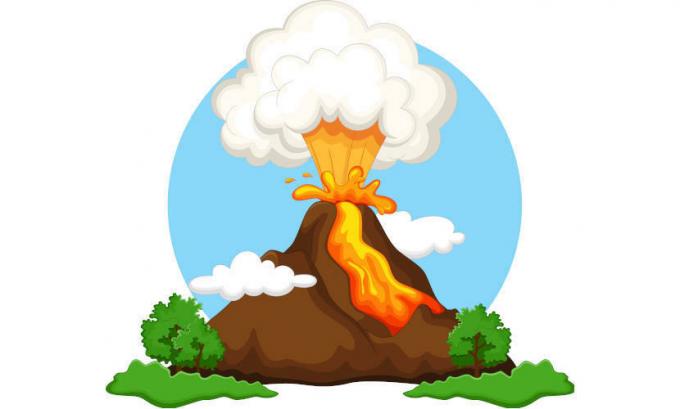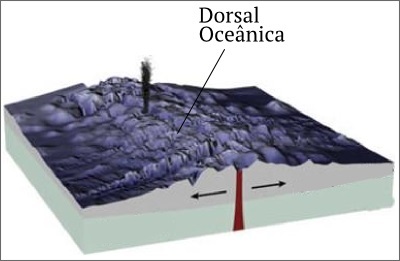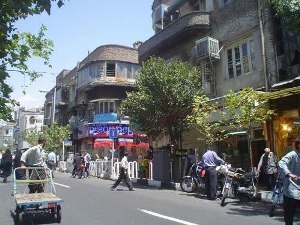that the volcanoes erupt, we all know, but many wonder why. Volcanoes are feared by all civilizations, especially those that live in areas where they can be found, since volcanic activity is a natural phenomenon capable of causing enormous damage, whether environmental or social. But to understand why volcanoes erupt, you must first understand what a volcano is and how a volcano is formed.
readalso:Why are there no volcanoes in Brazil?
What is a volcano?
You volcanoes they are big onesstructuresgeological that correspond to a fissure in the earth's surface. Its formation occurs through the shock of tectonic plates, which are rocky blocks that lie on top of the magma, forming the lithosphere.
These blocks are found in constantmovement which is caused by the internal forces of the Earth. When the plates collide, they end up causing elevations on the surface, giving rise, then, to volcanoes. These can form either in continental areas or in the oceans.
In different regions of the world, we can find volcanoes, and their distribution is directly related to the existence of tectonic plates. These volcanoes are formed in the areas where the plates meet, so in regionsborderline between the plates, the occurrence of volcanoes is much greater.
Lookalso:Why do tectonic plates move?
→ Constitution of a volcano

A volcano is made up of structures like a chimney and a crater.
The composition of a volcano, according to the Geological Survey of Brazil, is: silicates, water vapor and gas. Its structure basically corresponds to a magma chamber, a chimney, a volcanic cone and a crater.
Types of volcanoes
The shape and classification of a volcano is related to the type of volcanic eruption it performs. Volcanic eruptions can differ according to characteristics such as intensity, proportion and the expelled material. Therefore, there are some types of eruptions, such as:
explosive eruption
effusive eruption
mixed eruption
catastrophic eruption
Examples of types of volcanoes are:
shield volcanoes: they are geological structures capable of expelling large amounts of lava that, when solidified, increase the volcano's mass, making it wider and wider.
Slag cone volcanoes: are the most common geological structures. They are smaller, approximately 300 meters high and expel low-viscosity magmatic material.
Stratovolcanoes: are geological structures that have a conical shape and a small crater on top. They have a long volcanic activity.
Upwelling caldera volcanoes: are the largest volcanoes. They are found in valley regions.
underwater volcanoes: are the geological structures found under the oceanic masses.
Why do volcanoes erupt?

Volcanic eruptions are related to the Earth's internal forces that move tectonic plates.
The explanation for a volcano to erupt is related to Earth's internal forces. These forcescomingsofinteriorofplanet keep the magma in constant activity. This movement causes the earth's lithosphere to move too, remembering that this is not consisting of a single rocky block, but several blocks that move relative to each other. others.
When these blocks collide due to agitation of magmatic material associated with the high temperatures inside the Earth, it causes magma to ascend to the surface, and then expelled to the outside of the planet. Upon reaching the surface, often violently, the magma, known as lava, may travel a few kilometers or it may solidifyand just increase the volcano's mass. This lava is found at temperatures above 1000ºC.
Volcanoes and earthquakes
The occurrence of earthquakes and the existence of volcanoes is not just a coincidence. Earthquakes, which are natural phenomena, correspond to tremors on the earth's surface and in the ocean floor, also known as tremorsseismic, resulting from the release of accumulated forces. These tremors can be caused both by the movement of tectonic plates and also by volcanic activity.
The volcanic eruption, being caused by the accumulation of pressure when there is movement of the plates, ends up generating a dischargeinenergy and then the rise of magma. Depending on how intense this eruption occurs, it can result in possible surface tremors, ie earthquakes.
know more:Earthquakes in Brazil
Can an inactive volcano erupt?
Active volcanoes are those that present volcanic activity, that is, there are eruptions or signs of instability. Inactive volcanoes, on the other hand, are those that do not show activity, but there is no way to rule out that at some point they may show signs of instability again. Thus, inactive volcanoes can, at some point, return to activity. Only extinct volcanoes are unlikely to show any more volcanic activity.



